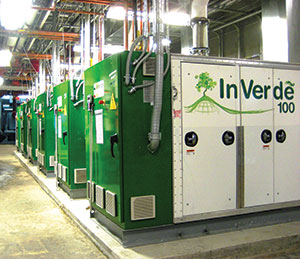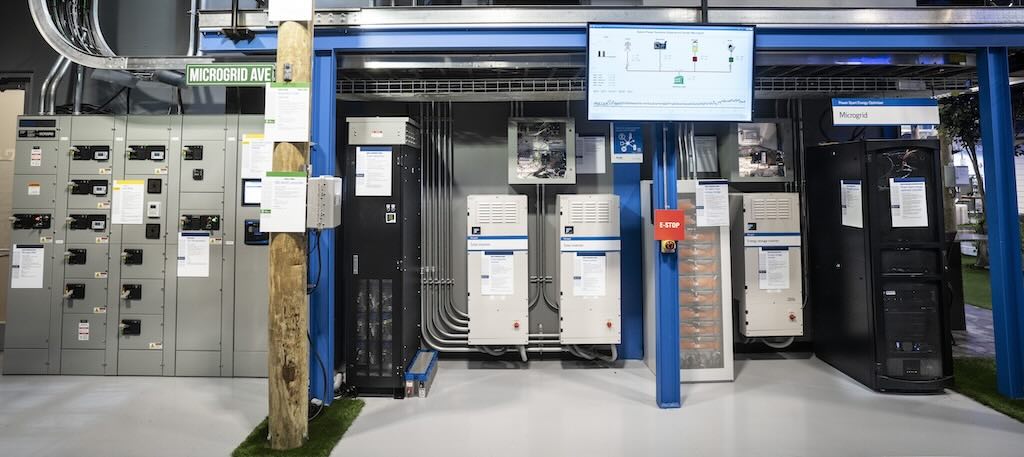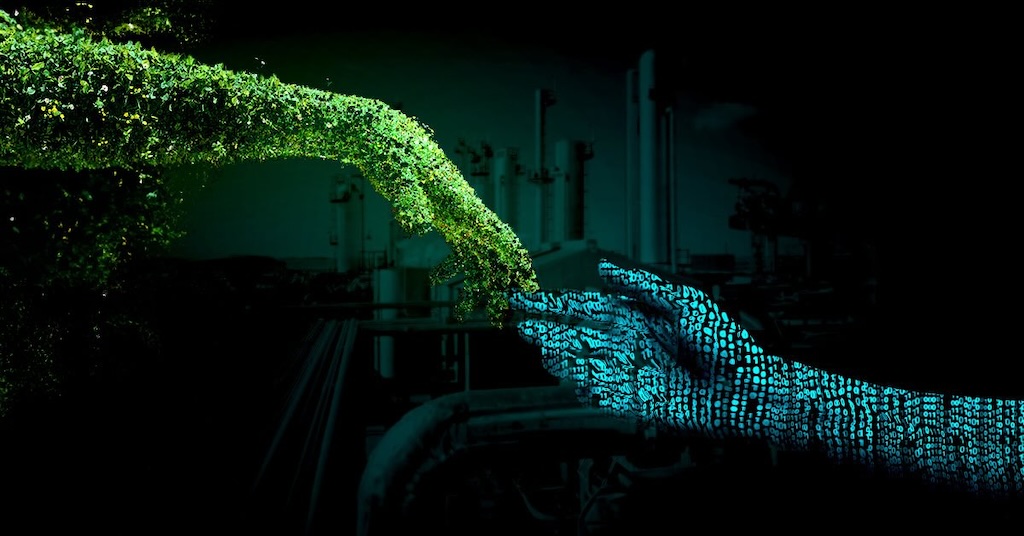Profit engines for industry

At budget time at industrial companies, attention is drawn to energy expenses. Think how sweet it would be to foresee a major decline in those expenses. More dollars could be dedicated to research, development, manufacturing improvements and marketing programs. That energy solution may already be available, in the form of packaged engine-powered combined heat and power (CHP).
Power + Heat = Savings
Packaged engine CHP uses proven, factory-assembled systems for reliable onsite generation of electric power. Increasing numbers of packaged natural gas engine CHP systems are now available in sizes from 80 kWe to 3 MWe. Reliable natural gas-fired reciprocating engines designed for peak efficiency at steady generation speeds offer electric generation efficiencies from 25% to 40%.
But the systems don’t stop there. They extract heat from the engine cooling process, and often from the engine exhaust as well, to heat water to levels useful for domestic hot water, process hot water, boiler feedwater preheating, or even to supply an absorption chiller for cooling. Major portions of the engine heat that would otherwise be wasted will replace water heating energy that previously was purchased.
Packaging Means Reliability and Economy
In the early years of these “cogeneration” applications, each installation was engineered individually. Components were ordered separately and then installed on site — a slow, expensive and sometimes troublesome process. Owners had to supervise each step of the assembly. Those days are in the past.
Today’s factory packages offer engines, generators, heat extraction and system auxiliaries pre-engineered and assembled at the factory for optimum operation. Systems arrive on a single skid that need only be placed and connected with the electric service, fuel lines and chosen hot water applications. Startup is straightforward and little on-site assembly labor or testing is needed. Those tasks were already completed at the factory.
Packaged 100 kW Units
Jeff Glick from Tecogen was a recent presenter at a Technology & Market Assessment Forum (TMAF) sponsored by the Energy Solutions Center. He explained the business benefit of packaged CHP units, used singly or in groups. He provided information on Tecogen’s InVerde 100 package that is widely used in multifamily, commercial and industrial applications. Single packaged units can simultaneously generate 100 KW of electricity and hot water at 700,000 Btu/hr.
According to Glick, these packages are commonly used in multiple applications of six or more units. This modular approach assures engine operation at levels of optimum efficiency, and provides redundant sources of electricity and hot water, even while a unit is being serviced. Modularity also simplifies fitting the equipment into existing spaces and allows future expansion.
High Total System Efficiency
Tecogen’s InVerde 100 system efficiency is 27.0% on the electrical side and 55.4% on the heating side, for a total efficiency of 82.4%, based on Lower Heating Value (LHV). Glick indicates this solution can cut energy costs by 30-50%, and can reduce a facility’s carbon footprint by 50%. Units offer high power quality and can be equipped for black-start capability, Using abundant, low-cost natural gas also reduces our dependence on imported fuels.
Tecogen spokesperson Melinda Furse observes that in the past CHP was usually prescribed for a site by an engineering or energy firm, but that practice is changing. “Today we see more solicitations from end users – building owners and building managers – than we ever have in the past. We have found that offering a single point of accountability for engineering, installation and maintenance has been an invaluable asset to furthering the adoption of CHP.”
Changing Sizing Philosophy
Furse notes that in the past the practice was to size systems purely on the thermal requirements of the site, producing only as much electricity as the thermal load would allow. “The latest trend seems to be that facilities are choosing advanced CHP systems with additional capacity, giving greater power flexibility. During peak hours they can run the system harder to offset power from the grid. The additional capacity also allows many sites to produce 100% of their needs in case of a blackout.”
She stresses, “Building owners want energy independence. They understand intrinsically the value of making your own electricity while capturing and repurposing the heat, and offsetting boilers. Offering turnkey solutions makes this technology more accessible and easier for a site to implement.”
A recent graphic example of the value of onsite generation was at a co-op residential facility in Greenwich Village, the Brevoort. It was able to maintain power, hot water and electric service during the recent outages in Manhattan following Superstorm Sandy. The 20-story facility is equipped with four InVerde 100 kW units that had replaced an oil-heat system two years earlier. According to Diane Nardone, the president of the co-op, theirs was the only building on lower Fifth Avenue to continue to offer energy and full service to residents.
Tecogen indicates that the low and stable prices for natural gas in recent years have influenced decisions on CHP. Furse says, “Sites that have been calculated as having a four or five year payback might now be only two to three years. Obviously, the shorter the payback, the more compelling the project.”
Larger Units for Larger Loads
Another recent presenter was Bill Pearson from Western Branch Diesel, representing MTU Onsite Energy, a wholly owned subsidiary of the Tognum group, a German company with a worldwide presence in onsite energy generation. This company offers systems manufactured and assembled in North America with full CHP potential. They have two product lines, the Series 400 ranging from 128 to 354 kW, and the Series 4000 ranging from 764 to 1930 kW.
The MTU Onsite Energy systems are designed to operate over a wide range of gas fuels, including natural gas, biogas, landfill gas and coalbed methane. This makes these units particularly attractive for applications where multiple fuels are used. Units are available with or without heat recovery options for various industrial uses.
Project Paybacks
The claimed efficiency of the MTU electrical generation ranges from 33% to 35%, and with full heat recovery, overall efficiency ranges from 90% to 92%, depending on the engine selected. Pearson explained that financial analysis indicates that a full heat recovery installation could have an investment payback of three years.
In another TMAF presentation, Stephen Zilonis from Dresser-Rand discussed his firm’s offerings in packaged CHP. The company offers an array of packaged or engineered systems well suited to industrial and institutional applications, including systems powered by Guascor or Caterpillar.
Cooling Option
One intriguing possibility is the Dresser-Rand Caterpillar Trigen Package, which includes a 555 kW electrical output, hot water delivered at 180° F in quantities of 3,617,000 Btu/hr, and absorption cooling totaling 130 ton capacity. The entire unit is skid mounted and suitable for indoor or outdoor installation. The package includes all utility-required controls and customer monitoring capabilities.
Wide Range of Sizes
For any package CHP installation, it is important to accurately characterize the load to be served and to evaluate the physical space available for the CHP plant. 2G-Cenergy is a firm with long experience in gas-fueled CNG plants in Europe and now offering this technology in North America. The company offers units with capacities ranging from 80 kWe to 3 MWe, and designed for various fuels, including natural gas and many biofuels. In particular they emphasize that their units can be sited either indoors or outdoors, and they make special accommodation for use with absorption chiller packages.
Getting Started
As you consider the feasibility of CHP for your plant or institution, it is important to gather full-year energy usage information for electrical and boiler operations so that total energy requirements can be accurately forecast. Your natural gas utility can be of assistance in explaining service policies and can tell you about other CHP installations in your area.
More Info:
Energy Solutions Center Understanding CHP
DOE Industrial Distributed Energy
Dresser-Rand
Tecogen



